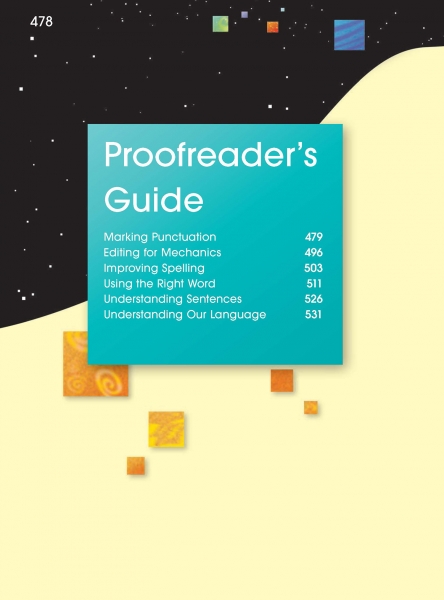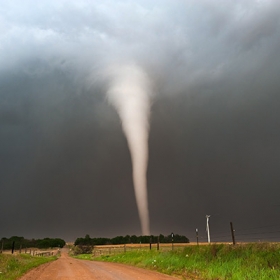Page 478 from

Start-Up Activity
The “Proofreader’s Guide” is a handy reference for the rules governing the use of punctuation, mechanics, spelling, commonly misused words, sentence structure, and parts of speech. By design, this information is easy for students to access. As students can see on page 479, the subject—periods—is in bold at the top of the page. The rules for using periods are in red. Clear explanations and examples follow each rule. To access this information, students can use the index numbers down the left-hand margin.
Students should refer to the Proofreader's Guide whenever they have a question about using the language correctly. Such questions will naturally arise when students are editing and proofreading their writing.
The key for you is to make sure that students are aware of all of the information in this section, plus how to access it using the index (pages 596–610). For practice, use the following “topic search” activity, which asks students to use the index to find specific page numbers in the Proofreader’s Guide.
- On what page can you find information about using commas in a series? (page 482)
- On what pages would you find information about using apostrophes? (pages 494-495)
- On what page would you find information about capitalizing geographical names? (page 497)
- On what page would you find information about using numbers correctly? (page 502)
- On what page would you find information about using who, which, and that? (page 525)
- On what page would you find information about simple subjects? (page 526)
- On what pages would you find information about complex sentences? (pages 81 and 530)
- On what page would you find a definition of the word antecedent? (page 533)
- On what page would you find a chart of irregular verbs? (page 541)
- On what page would you find information about comparative and superlative adjectives? (page 545)
For more activities like the ones found in this chapter of the Teacher's Guide, refer to the SkillsBooks for grade 6, grade 7, and grade 8.
Think About It
“No iron can pierce the heart with such force as a period put just at the right place.”
—Isaac Babel
Chapter Opening Downloads:

Start-Up Activity
The “Proofreader’s Guide” is a handy reference for the rules governing the use of punctuation, mechanics, spelling, commonly misused words, sentence structure, and parts of speech. By design, this information is easy for students to access. As students can see on page 479, the subject—periods—is in bold at the top of the page. The rules for using periods are in red. Clear explanations and examples follow each rule. To access this information, students can use the index numbers down the left-hand margin.
Students should refer to the Proofreader's Guide whenever they have a question about using the language correctly. Such questions will naturally arise when students are editing and proofreading their writing.
The key for you is to make sure that students are aware of all of the information in this section, plus how to access it using the index (pages 596–610). For practice, use the following “topic search” activity, which asks students to use the index to find specific page numbers in the Proofreader’s Guide.
- On what page can you find information about using commas in a series? (page 482)
- On what pages would you find information about using apostrophes? (pages 494-495)
- On what page would you find information about capitalizing geographical names? (page 497)
- On what page would you find information about using numbers correctly? (page 502)
- On what page would you find information about using who, which, and that? (page 525)
- On what page would you find information about simple subjects? (page 526)
- On what pages would you find information about complex sentences? (pages 81 and 530)
- On what page would you find a definition of the word antecedent? (page 533)
- On what page would you find a chart of irregular verbs? (page 541)
- On what page would you find information about comparative and superlative adjectives? (page 545)
For more activities like the ones found in this chapter of the Teacher's Guide, refer to the SkillsBooks for grade 6, grade 7, and grade 8.
Think About It
“No iron can pierce the heart with such force as a period put just at the right place.”
—Isaac Babel










